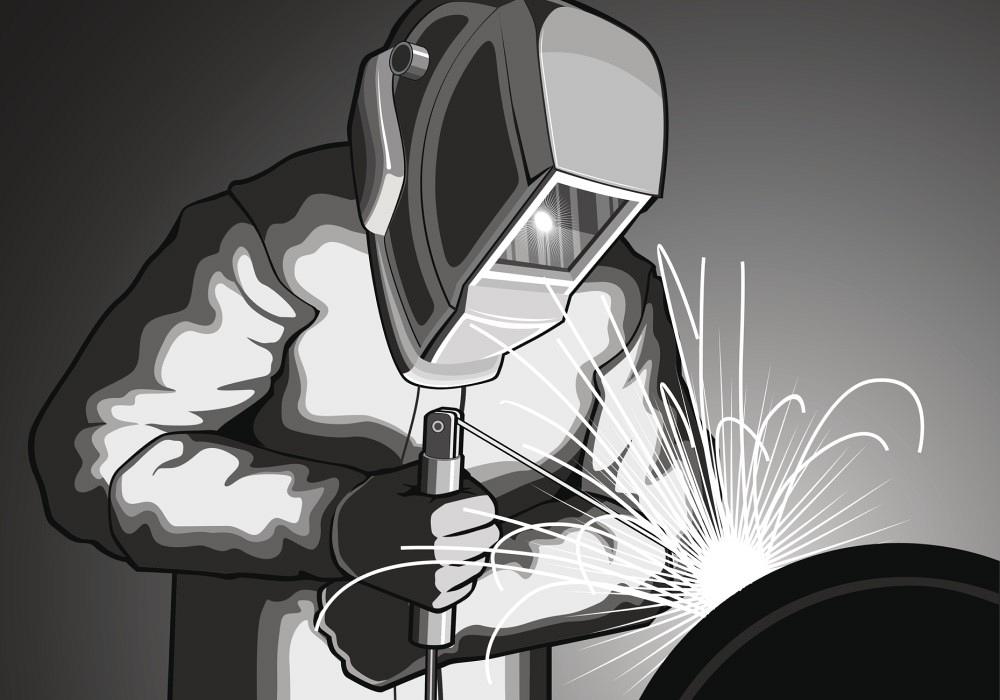Achieving Welding Quality: Revealing the Secrets of WPS Execution and Optimization
In the world of welding, achieving excellence is a search that hinges on the precise execution and optimization of Welding Treatment Specifications (WPS) By delving right into the vital elements, methods, obstacles, and best practices connected with WPS, a world of welding quality awaits those who are ready to discover its depths.
Significance of WPS in Welding
The Value of Welding Treatment Specifications (WPS) in the welding market can not be overemphasized, working as the backbone for guaranteeing uniformity, top quality, and safety and security in welding operations. A WPS provides comprehensive directions on exactly how welding is to be performed, consisting of essential variables such as materials, welding processes, joint style, filler metals, interpass and preheat temperatures, welding currents, voltages, travel speeds, and much more. By adhering to a well-defined WPS, welders can keep harmony in their work, leading to consistent weld quality across different projects.

Crucial Element of WPS
Going over the indispensable parts of a welding treatment specification (WPS) is important for comprehending its function in welding operations. One vital facet of a WPS is the welding procedure requirements, which lays out the details welding procedures to be made use of, such as gas tungsten arc welding (GTAW) or secured steel arc welding (SMAW) By including these essential components right into the WPS, welding treatments can be standard, making certain quality, efficiency, and safety in welding operations.
Strategies for WPS Optimization

Secondly, training and credentials of welding personnel according to the particular needs of the WPS is paramount. Offering thorough training programs and ensuring that welders are accredited to implement treatments outlined in the WPS can result in better welds and minimized rework.
In addition, leveraging technology such as welding software and tracking systems can help in maximizing WPS. These devices can assist in tracking variables, making sure criteria are within specified restrictions, and giving real-time comments to welders, allowing them to make prompt changes for improved weld high quality.
Usual Obstacles and Solutions
Encountering challenges in carrying out the techniques for WPS optimization can impede welding operations' performance and top quality. One typical difficulty is inadequate training or understanding of the welding procedure specs (WPS) among the welding team.
One more challenge is the absence of appropriate paperwork and record-keeping, which is important for WPS optimization. Without clear records of welding criteria, materials used, and inspection outcomes, it ends up being challenging to recognize areas for improvement and make certain uniformity in welding processes. Applying a durable documentation system, such as electronic welding administration software, can aid improve record-keeping and facilitate information evaluation for constant renovation.
Furthermore, inconsistent welding devices calibration and maintenance can posture a considerable obstacle to WPS optimization. Routine equipment checks, calibration, and upkeep schedules must be abided by purely to make certain that welding specifications are properly managed and kept within the specified resistances (welding WPS). By dealing with these usual obstacles with proactive remedies, welding operations can improve effectiveness, top quality, and general welding quality
Ideal Practices for WPS Implementation
To make certain effective WPS implementation in welding operations, adherence to market criteria and meticulous focus to detail are extremely important. When starting WPS execution, it is essential to begin by extensively understanding the certain welding needs of important link the project. This involves a thorough review of the welding treatment requirements, products to be bonded, and the environmental problems in which the welding will certainly happen.
As soon as the needs are clear, the next step is to choose the ideal welding procedure that lines up with these specs. This entails consulting the appropriate codes and requirements, such as those given by the American Welding Culture (AWS) or the International Organization for Standardization (ISO), to guarantee compliance and high quality.
In addition, recording the whole WPS implementation process is vital for traceability reference and quality assurance. Thorough documents should be kept regarding welding parameters, material preparation, interpass and preheat temperature levels, welding consumables made use of, and any kind of variances from the original procedure. Routine audits and evaluations of the WPS can assist determine areas for improvement and ensure ongoing optimization of the welding process.


Final Thought
To conclude, the implementation and optimization of Welding Treatment Specifications (WPS) is crucial for attaining welding excellence. By recognizing the essential elements of WPS, carrying out effective approaches for optimization, dealing with usual difficulties, and following finest practices, welders can make sure high-quality welds and safe working conditions. It is critical for experts in the welding sector to prioritize the correct implementation of WPS to boost overall welding performance and attain desired end results.
The Importance of Welding Treatment Requirements (WPS) in the welding industry can not be overemphasized, serving as my blog the backbone for making certain consistency, high quality, and safety and security in welding operations. A WPS offers thorough directions on exactly how welding is to be lugged out, including vital variables such as products, welding processes, joint design, filler steels, interpass and preheat temperatures, welding currents, voltages, travel rates, and extra. One essential element of a WPS is the welding process spec, which details the certain welding procedures to be utilized, such as gas tungsten arc welding (GTAW) or protected steel arc welding (SMAW) By including these key components right into the WPS, welding treatments can be standard, making certain quality, efficiency, and security in welding procedures.
It is critical for professionals in the welding industry to focus on the correct implementation of WPS to improve general welding performance and accomplish preferred end results.